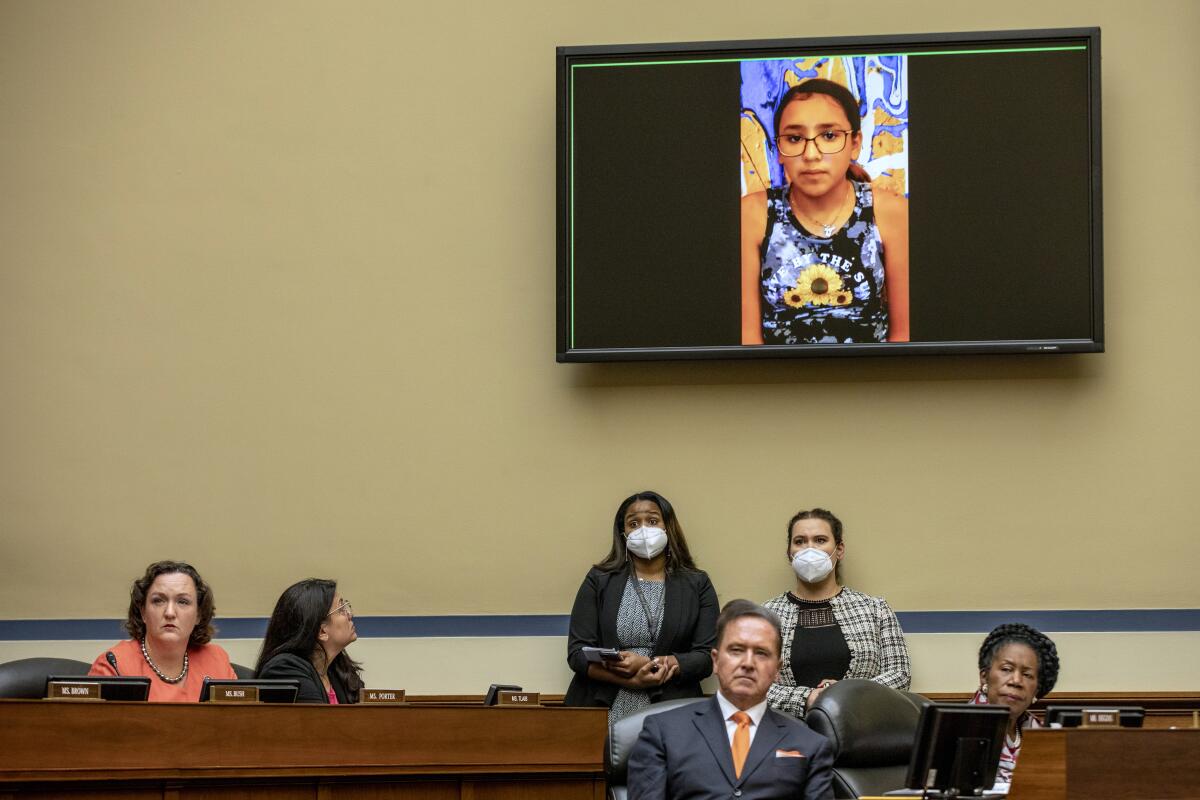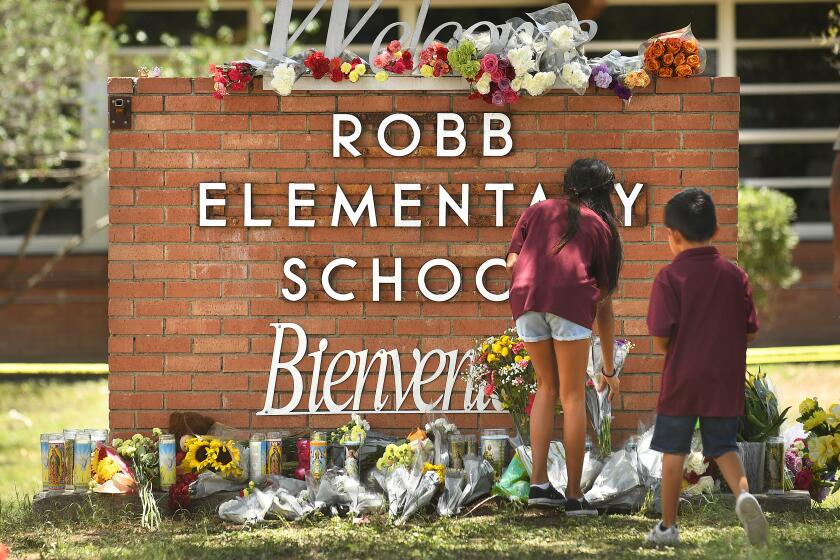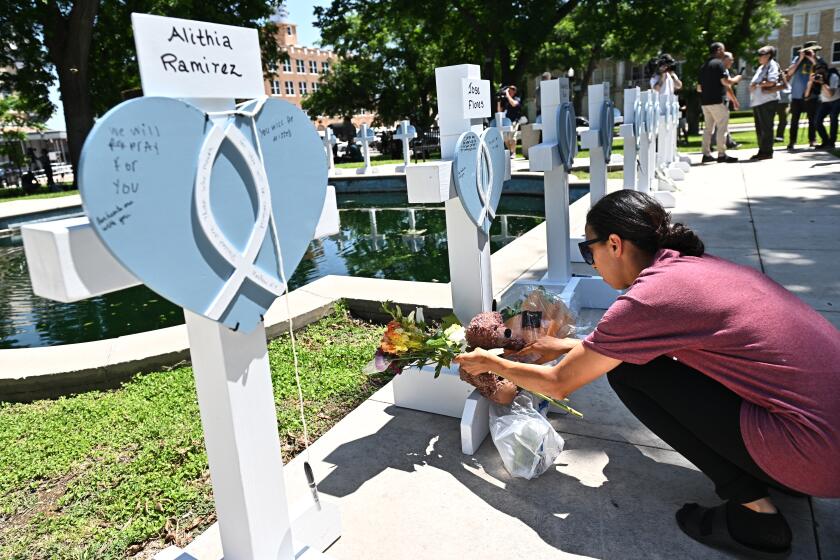Editorial: Keep at it, senators. Modest action on gun safety is better than nothing at all

It was hard to discern what was most upsetting during this week’s congressional hearing on the national epidemic of gun violence.
Was it the pediatrician from Uvalde, Texas, describing the bodies of decapitated children in his emergency room on May 24, so mutilated that they could only be identified by their “blood-splattered cartoon clothes”?
Was it the mother who talked about the last time she saw her daughter alive, watching her receive an award for good grades during fourth grade at Robb Elementary School, promising to take her out for ice cream later and then leaving for a day of work? It was a decision that she said “will haunt me for the rest of my life.”
Or was it the 11-year-old girl, who said she was so afraid of being killed by the gunman who’d already massacred her teacher and her classmates that she decided to play dead on the floor of her classroom by covering herself with blood from her friend’s body?
Even the killing of 19 children and two teachers in a Texas classroom seems unlikely to spur reform
After this heart-wrenching testimony, the Democratic-controlled House took logical action and passed a package of reasonable gun safety measures. The bills would increase the age to buy semiautomatic weapons from 18 to 21, ban high-capacity magazines, create new requirements for gun owners to safely store their firearms and expand “red flag” laws that allow families and police to ask courts to order the removal of firearms from people at extreme risk of harming themselves or others.
But compounding the tragedy of recent mass shootings in Uvalde; Buffalo, N.Y.; and Tulsa , Okla.; (as well as dozens more that don’t generate as many headlines — carnage in recent days in Portsmouth, Va.; Baltimore; Mesa, Ariz.; Saginaw, Mich.; Chattanooga, Tenn.; and Philadelphia has left 31 people injured and 15 dead, including a pregnant woman whose 25-week-old fetus was pulled from her body) was the all-but-certain likelihood that the House legislation will stall in the Senate.
Even though gunshots are now the leading cause of death for American children — taking more young lives than car crashes — Republicans’ resistance to limits on firearms will likely doom the bills in the 50-50 Senate, where the filibuster rule requires support from 10 GOP senators to advance debate.
The good news, if you can call it that in the nation that has the highest rate of firearm deaths among the world’s most developed countries, is that a bipartisan group of senators is trying to craft a gun safety bill that has a chance of passing the Senate and being signed into law. It would be much narrower than the House legislation, and could include incentives encouraging states to create red-flag laws, an expansion of federal background checks to incorporate juvenile records and funding to improve school security and support mental health programs.
This is hardly the kind of bold, transformative policy that we would like to see. The nation should expand background checks and reinstate the assault weapons ban, policies that have been shown to save lives and are supported by more than 60% of Americans, according to a Pew survey last year.
Resisting gun control is one of the many ways our country’s leaders tolerate violence against children whom they have the power and responsibility to protect.
But doing something is better than nothing. And expanding red-flag laws to more states could make a positive difference. California is among 19 states that have laws allowing family members and law enforcement officers to seek a court order to temporarily remove firearms from people at significant risk of harming themselves or others.
New research examining the first three years of the California law allowing these “gun violence restraining orders” found that they were successful in removing firearms in 58 instances in which someone threatened a mass shooting, including six cases targeting schools. They were also effective in preventing possible self-harm, which was threatened in about 40% of the cases examined during the 3-year period. No suicides occurred among people who threatened self-harm and then had their guns removed by court order, according to the study from the Violence Prevention Research Program at UC Davis.
California can make this policy even more effective by educating the public that it’s possible to ask courts to remove someone’s guns and by training more judges, district attorneys and law enforcement officers in how the process works. It was good to see last week that Gov. Gavin Newsom announced $11 million to support such outreach.
Senators in Washington, meanwhile, must push ahead and reach a bipartisan agreement to reduce the number of Americans who are killed, injured and traumatized by gun violence. It’s the very least they can do for the nation’s children.
More to Read
A cure for the common opinion
Get thought-provoking perspectives with our weekly newsletter.
You may occasionally receive promotional content from the Los Angeles Times.












